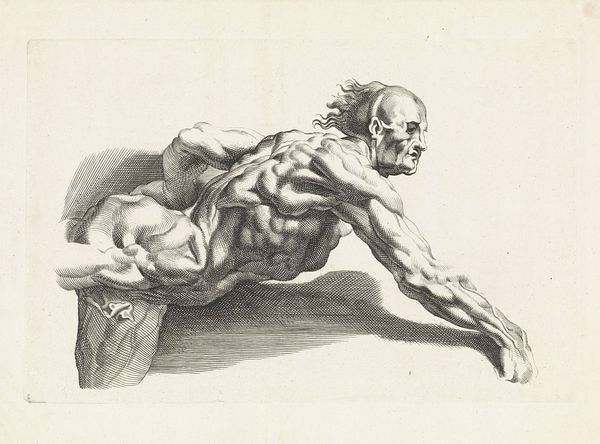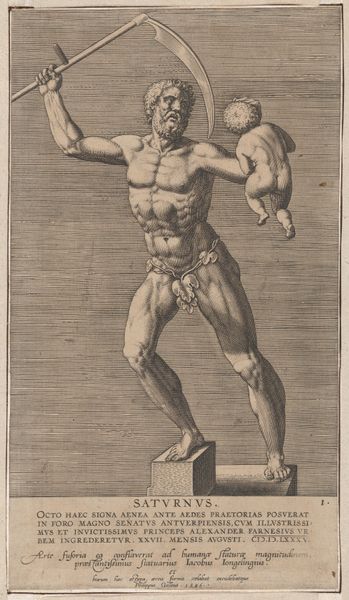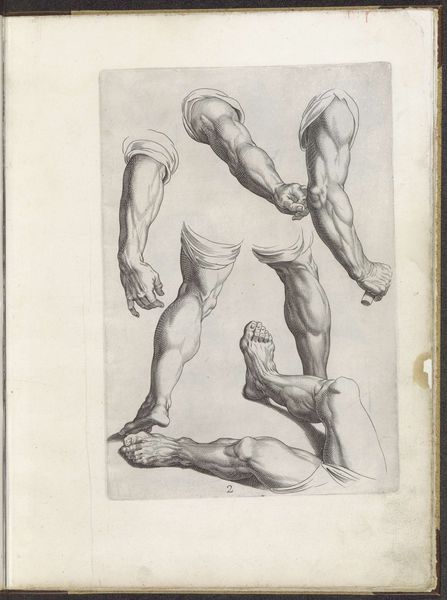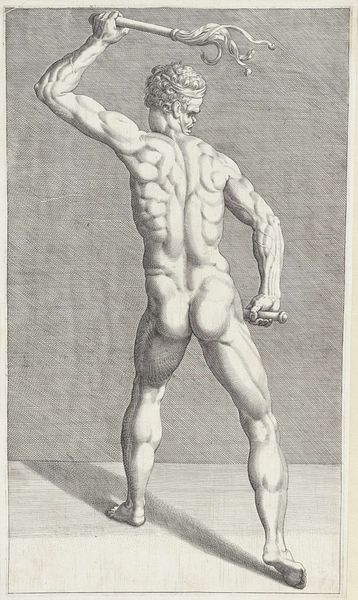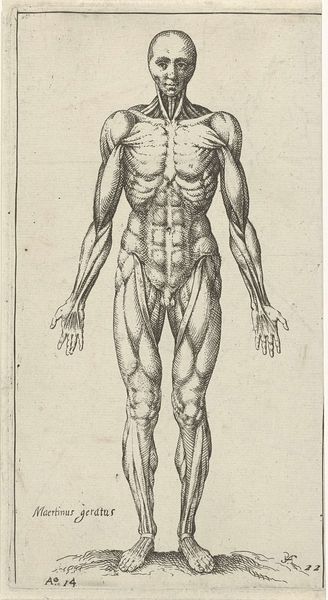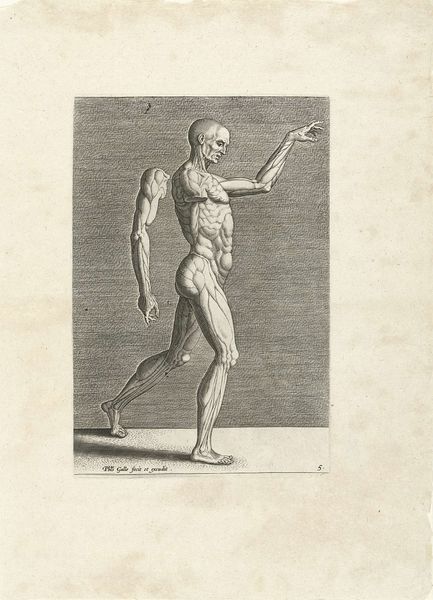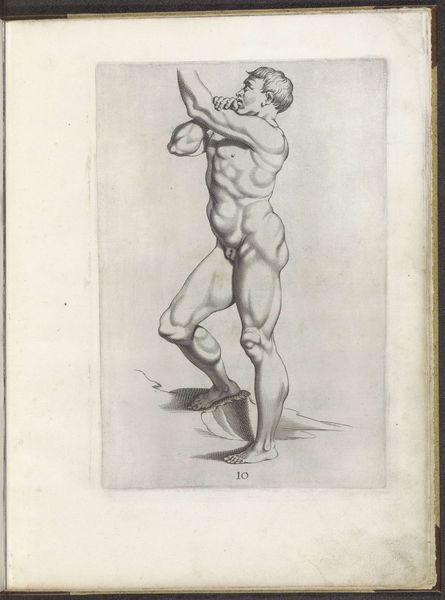
engraving
#
baroque
#
figuration
#
form
#
line
#
history-painting
#
nude
#
engraving
#
realism
Dimensions: height 318 mm, width 214 mm
Copyright: Rijks Museum: Open Domain
Curator: Good morning, I’d like to introduce Paulus Pontius's "Anatomische studie van een staande man," created sometime between 1616 and 1657. It’s currently held in the Rijksmuseum collection. Editor: Intriguing, it is raw and visceral. The pronounced musculature gives a somewhat tortured and distorted effect, despite its seeming dedication to realism. Curator: Pontius, a celebrated engraver from Antwerp, worked within a rich artistic milieu. Think of the pervasive influence of Rubens in anatomical studies—a clear nod to classical ideals viewed through the lens of Baroque drama and Catholic Counter-Reformation. Prints like this were hugely important as a method to disseminate such scientific explorations to artists and scholars across Europe. Editor: Agreed. The hatching and cross-hatching serve to accentuate volume and shadow, providing an illusion of depth that is quite sophisticated, especially considering this is just lines on paper. Look how the contrast highlights every sinew, lending an almost grotesque quality to the idealized male nude. Curator: Yes, its impact resonates deeply with the prevailing aesthetic of its era. Anatomy as a source of not only scientific knowledge but as a powerful reflection on human existence itself. The study hints at both strength and vulnerability. The posture suggests burden. Editor: The stark presentation undeniably emphasizes form over beauty, almost a surgical precision that speaks to objective investigation, far beyond mere portraiture. It's a dynamic display of line and contour creating both clarity and, dare I say, anxiety? Curator: Anxiety, precisely! Think about how anatomy theaters and medical advancements shaped public perception during this period. It all plays into the artwork’s lasting historical value and speaks to society's developing understanding of science, art, and the human condition. Editor: A valuable piece when considered alongside the history it reflects, yes, even through its emphasis on lines to construct the drama within. Thank you, fascinating. Curator: Thank you. A great note on which to conclude.
Comments
No comments
Be the first to comment and join the conversation on the ultimate creative platform.

